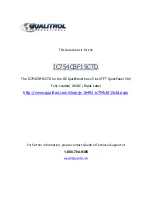
6
7
INSTaLLaTIoN aND oPeraTIoN MaNUaL SoLar MoDULeS GeNeraTIoN 3 (G3) – HaNWHa Q CeLLS aUSTraLIa PTY LTD
INSTaLLaTIoN aND oPeraTIoN MaNUaL SoLar MoDULeS GeNeraTIoN 3 (G3) – HaNWHa Q CeLLS aUSTraLIa PTY LTD
Fig. 1:
external dimensions (in mm) and components for Q.PRo-G3, Q.PRo BLK-G3, Q.PeAK-G3, Q.PLus-G3
Installation Site
Please note the following guidelines that apply to the
installation site:
•
the modules have been tested according to iec 61215
for operation in a temperate climate.
•
solar modules are not suitable for use in explosive
environments.
Ä
Do not operate solar modules near highly flammable gas
and vapors (e.g. gas tanks, gas stations).
Ä
Do not install modules in enclosed space.
Ä
Do not install modules in locations where they may be
submerged in water for lengthy periods.
Ä
Do not use modules as a substitute for the normal
roofing (e.g. modules are not rainproof).
Prevention of Shadowing effects
optimal solar irradiation leads to maximum energy output:
Ä
For this reason, install the modules so that they face
the sun.
Ä
Avoid shadowing (due to objects such as buildings,
chimneys or trees).
Ä
Avoid partial shading (for example through overhead
lines, dirt, snow).
Limitations
the solar modules are designed for the following applica-
tions:
•
operating temperatures from –40 °c to +85 °c
(–40 °F to +185 °F).
•
Wind and snow loads up to max. 5,400 Pa (as tested
according to iec 61215).
•
installation using a mounting frame for solar modules.
Mounting frame requirements
Requirements for the mounting frame:
•
conforms to the necessary structural requirements.
•
compliant with local snow and wind loads.
•
Properly fastened to the ground, the roof, or the façade.
•
Forces acting on the module are relayed to the mounting
substructure.
•
Ensures sufficient rear ventilation of the module.
•
Guarantees long-term stability.
•
Has electrochemical series that prevent corrosion among
different metals.
•
Allows for stress-free expansion and contraction due to
temperature fluctuations.
Ä
ensure that no mechanical stresses (e.g., caused by vibrations,
twisting, or expansion) are generated on the module.
Ä
ensure that the clamps and the mounting frame are
compatible.
Clamp System requirements
use customary clamps that satisfy the following require-
ments:
•
clamp width:
≥
40 mm.
•
clamp height compliant with a 35 mm frame height.
•
clamp depth: 7–12 mm.
•
clamps are not in contact with the front glass.
•
clamps do not deform the frame.
•
clamps that satisfy the structural requirements of the
installation site.
•
Long-term stable clamps that securely affix the module
to the mounting frame.
Module orientation requirements
•
Vertical or horizontal installation is permitted.
Ä
ensure that rain and melting snow can run off freely.
No water accumulation.
Ä
ensure that the drainage holes in the frame are not
covered. No sealing.
•
A module with min 1,160 mm long
cable can be wired as a "2nd next
neighbor".
"2nd next neighbor" - Wiring without a
return cable.
standard wiring with a return cable
Inverter
Inverter
1
2
Ä
maintain the permissible angle of
inclination.
•
minimum angle of inclination: 3°
•
maximum angle of inclination: 80°
•
Follow the directions for installation
angles < 5° (“Grounding”, p. 20)
2.1 Technical specifications
2 PLaNNING
2.2 requirements
2 PLaNNING
DETAIL A
16 mm
8 mm
20.3 mm
150 mm
Junction bo×
Product label
≥
1160 mm
980 mm
1670 mm
4 × Fastening points (DETAIL A)
8 × Drainage holes
Cable with
connectors
Frame
6 × Grounding points ø 4.5 mm
1000
mm
959.4 mm






























